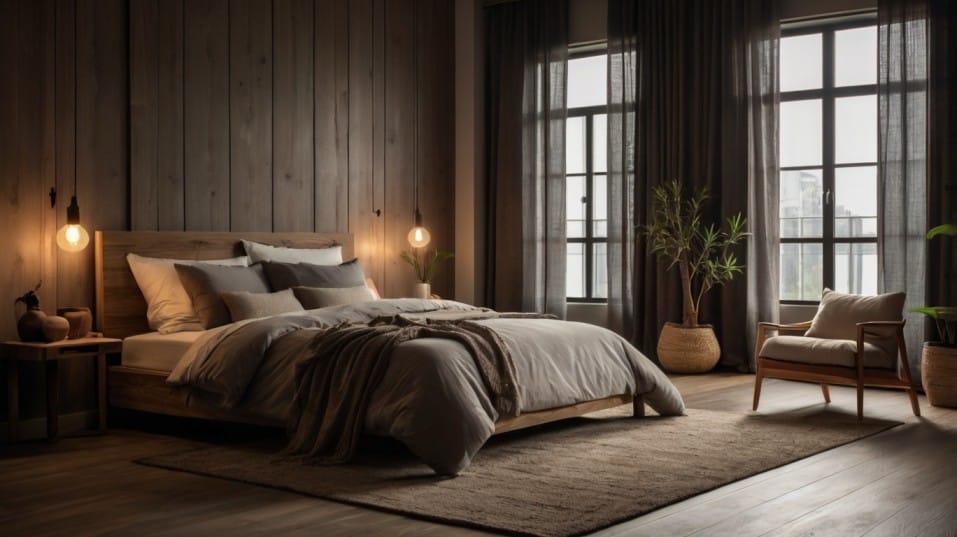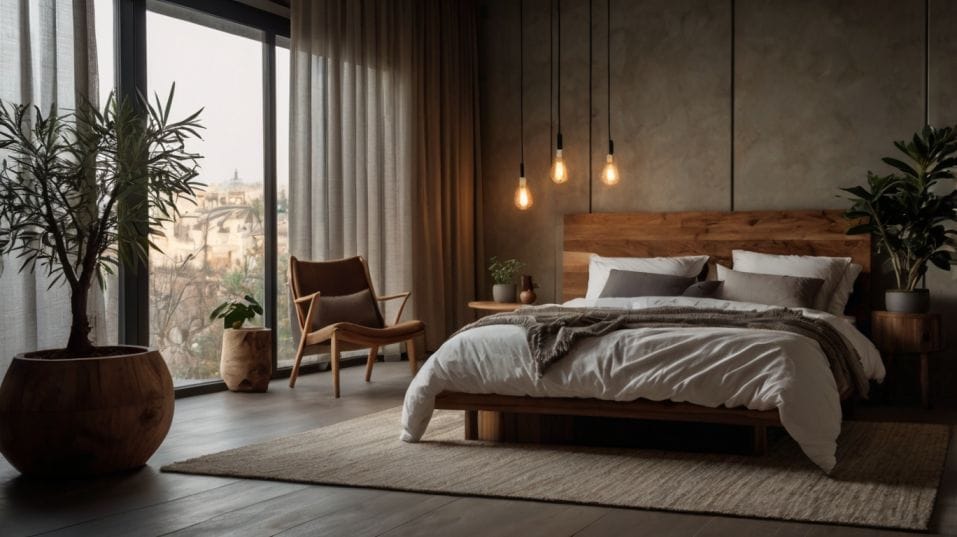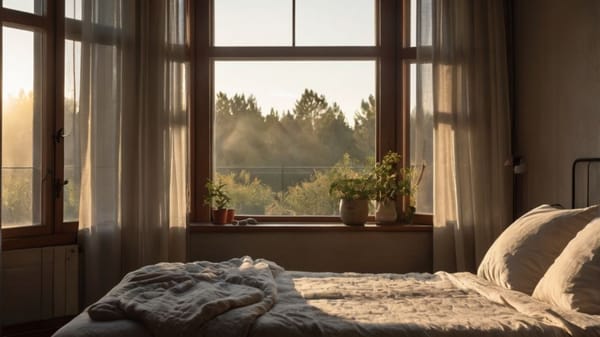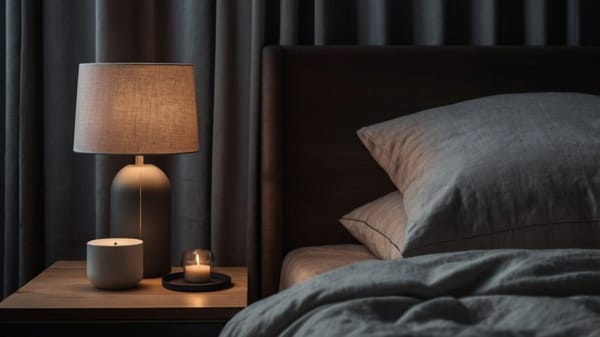A Step-by-Step Guide to Building a Sleep-Friendly Space
Transform your bedroom into a sleep-boosting sanctuary with simple, science-backed tweaks that help you fall asleep faster and wake up refreshed.

What if your bedroom is the reason you can’t fall asleep—and not your brain, phone, or stress levels?
Great sleep doesn’t start with a supplement; it starts with your space. If your room sends mixed signals, your body won’t know it’s time to switch off.
This guide walks you through simple, science-backed changes that turn your room into a powerful tool for better sleep. No fluff. Just a real setup that helps you reset, night after night.
Light: The Silent Sleep Saboteur
Your brain uses light to know when it’s time to be alert and when to wind down. Artificial light, especially from screens and overhead LEDs, can hijack that system and delay melatonin release.
That’s why it feels impossible to fall asleep after binge-watching a show in a brightly lit room.
Fix this by layering your light sources. Use a soft bedside lamp instead of ceiling lights in the evening. Swap harsh bulbs for warm-toned ones under 3000K.
Better yet, go for smart bulbs that gradually dim on a timer. Blackout curtains are essential if light from outside leaks in—your brain doesn't care if it's a streetlight or sunrise. A quality sleep mask works if curtains aren't an option.
Want an extra edge? Get 10 minutes of natural light exposure first thing in the morning. It locks in your body’s internal sleep-wake rhythm, making it easier to feel sleepy at night.

Temperature: Set It and Sleep
Sleep isn’t just mental; it’s biological. Your core body temperature needs to drop to initiate sleep. A hot, stuffy room fights against that drop.
The sweet spot? Somewhere between 60 and 67 degrees Fahrenheit (15 to 19 Celsius). But don’t just set the thermostat and hope for the best.
Pay attention to your bedding: memory foam mattresses can trap heat, while natural latex and hybrid mattresses offer better airflow. Sheets should be breathable—think cotton, bamboo, or moisture-wicking blends.
Still wake up sweaty? Try a cooling mattress pad or a fan placed across the room for indirect airflow.
And don’t underestimate the power of a warm shower 90 minutes before bed. It cools your core afterward, triggering a deeper sleep response.
Sound: Quiet Isn’t Optional
Noise doesn’t just keep you up—it fragments your sleep without you even realizing it. Sirens, traffic, neighbors, even a loud fridge can bump you out of deep sleep into a lighter stage.
Silence what you can. Seal windows. Fix creaky doors. For what you can’t control, use sound to your advantage. A white noise machine, pink noise app, or low fan can create a consistent background hum that masks disruptive sounds.
If you share your space with a snorer or live near a loud street, invest in high-fidelity earplugs designed for sleep.
The key is consistency. Your brain tunes out constant sound but stays alert to irregular noise. Keep it predictable, and your sleep depth improves.
The Bed Itself: Build a Sleep-First Nest
Your bed isn’t a workspace, a snack zone, or a crash pad. It should be a dedicated sleep signal. Every time you lie down, your brain should know it’s time to shut off.
Mattress
First, the mattress. Don’t overthink brand names—focus on support and comfort for your sleeping style. Side sleepers usually need a softer surface.
Back sleepers benefit from firmer support. If you wake up with stiffness or pain, your bed is likely working against you.
Bedding
Next: your bedding. Sheets should feel soft, not slippery or stiff. Pillowcases should breathe. Blankets should keep you warm without trapping heat.
Don’t overload the bed with throw pillows or overly heavy duvets. Simplicity wins. You want to slide in and feel instantly at ease.
Sensory Cues
Finally, add subtle sensory cues. A lavender diffuser, a freshly laundered pillowcase, or even a soft bedside rug can create associations that help your body shift into rest mode faster.
Clutter: Clean Space, Clear Mind
Your environment shapes your mindset. A cluttered bedroom whispers stress to your brain, even if you think you’ve tuned it out. That mental load shows up when you’re trying to relax.
Start by clearing surfaces. Nightstands shouldn’t be storage units. Keep only what you actually use: maybe a book, a lamp, and a water bottle.
Hide cords, unplug what you don’t need, and stash random items out of sight. Invest in under-bed bins or simple shelves if storage is tight.
If you use your bedroom for more than sleep—like working or exercising—separate zones visually.
Even small changes like a rug or divider can help signal boundaries. When your brain knows "this side is for work" and "that side is for rest," it transitions more smoothly.
Extra Upgrades That Actually Work
You don’t need a thousand-dollar mattress topper or a high-tech gadget to sleep better. But a few low-effort upgrades can level up your space fast:
- Aromatherapy: Use an essential oil diffuser with scents like lavender, chamomile, or cedarwood. Scent has a direct line to your nervous system.
- Weighted blankets: If you tend to feel restless or anxious at night, the gentle pressure of a weighted blanket can calm your nervous system.
- Blue-light filters: If screens are unavoidable at night, at least use blue-light-blocking glasses or enable night mode on your devices.
- Routine cues: Dim the lights. Play calming music. Light a candle. Do it nightly, and your brain starts to associate those signals with winding down.
Final Thoughts
You don’t have to overhaul your life to sleep better—you just have to stop letting your space sabotage you. The right environment trains your brain to relax on cue.
It makes falling asleep easier and makes the sleep you get actually restorative. That means more energy, sharper focus, faster recovery, and better days.
So don’t wait. Start tonight. Turn down the lights, clear your nightstand, crack the window, and let your space do the work. Build the kind of bedroom that doesn’t just look nice—it works hard to help you wake up ready.




